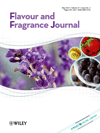
FLAVOUR AND FRAGRANCE JOURNAL
Scope & Guideline
Innovating Sensory Experiences Through Research
Introduction
Aims and Scopes
- Sensory Science and Analysis:
Focus on understanding the sensory properties of flavors and fragrances, including consumer perception, hedonic responses, and the neurocognitive impact of aroma. - Chemical Composition and Analysis:
Investigation of the chemical constituents of flavors and fragrances through advanced analytical methods such as gas chromatography, mass spectrometry, and other spectroscopic techniques. - Extraction and Synthesis Techniques:
Exploration of novel extraction methods for essential oils and flavor compounds, as well as synthetic pathways for the production of fragrance molecules. - Quality Control and Safety Assessment:
Research on the quality assurance processes and safety evaluations of flavoring agents and fragrance materials, including allergen detection and regulatory compliance. - Applications in Food and Beverage Industries:
Studies examining the application of flavors and fragrances in food products, beverages, cosmetics, and pharmaceuticals, focusing on enhancement and preservation of sensory attributes. - Environmental and Sustainable Practices:
Research promoting sustainable practices in the production and application of flavors and fragrances, including eco-friendly extraction and processing methods.
Trending and Emerging
- Neurocognitive Impact of Aromas:
Increasing research into how food aromas influence brain activity and perception, highlighting the interdisciplinary connection between sensory science and neuroscience. - Quality by Design in Flavor Development:
A growing emphasis on quality by design (QbD) approaches in the formulation and delivery of flavors and fragrances, ensuring consistent quality and enhanced consumer satisfaction. - Sustainable and Green Chemistry:
An emerging focus on environmentally friendly practices in the synthesis and extraction of flavor and fragrance compounds, aligning with global sustainability goals. - Flavor Interaction Studies:
Research investigating the interactions between different flavor compounds, particularly in complex matrices like food and beverages, to better understand consumer preferences. - Technological Advancements in Analysis:
Utilization of advanced analytical techniques, such as machine learning and chemometrics, to analyze and predict flavor profiles and sensory attributes. - Functional Foods and Health Benefits:
An increasing trend towards exploring the health benefits associated with specific flavors and fragrances, particularly in functional foods and nutraceuticals.
Declining or Waning
- Traditional Extraction Methods:
Research focusing solely on conventional extraction methods such as steam distillation has waned, as more innovative and efficient techniques gain traction. - Basic Flavor Profile Studies:
Basic studies on flavor profiles without the integration of sensory analysis or consumer perception are becoming less common, as the field shifts towards more applied research. - Single Compound Studies:
Research centered on individual flavor compounds without considering their interactions or broader applications has seen a decline, reflecting a shift towards more complex analyses. - Historical Contextual Studies:
Investigations into the historical uses of flavors and fragrances are becoming less prevalent in favor of contemporary applications and technological advancements.
Similar Journals
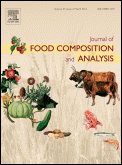
JOURNAL OF FOOD COMPOSITION AND ANALYSIS
Unveiling the Secrets of Nutritional ExcellenceJOURNAL OF FOOD COMPOSITION AND ANALYSIS, published by Academic Press Inc. Elsevier Science, is a leading peer-reviewed journal in the field of Food Science, recognized for its substantial impact on advancing research and knowledge within the discipline. With a commendable Q1 quartile ranking in the 2023 category of Food Science and a Scopus rank of 86/389, this journal holds a prestigious position, emphasizing its significance in crop and food quality research. The journal's scope encompasses a wide range of studies related to food composition, nutrition, and analytical methodologies, aiming to foster innovation and knowledge dissemination in food science. Although it operates under a subscription model, it remains an essential resource for researchers, professionals, and students seeking credible and cutting-edge findings. Established in 1987, the JOURNAL OF FOOD COMPOSITION AND ANALYSIS continues to be at the forefront of food science, contributing to the understanding of food quality and nutrition standards globally.

Applied Food Research
Transforming Research into Real-World SolutionsApplied Food Research, published by Elsevier, is an esteemed journal that plays a critical role in advancing the field of Food Science. With an ISSN of 2772-5022, the journal has established itself as a premier outlet for high-quality research, achieving a commendable Q1 ranking in the 2023 Food Science category and a 63rd percentile in Scopus rankings for Agricultural and Biological Sciences. Covering a diverse range of topics from food safety to innovative processing techniques, Applied Food Research seeks to publish pioneering studies that enhance our understanding of food systems and contribute to broader discussions on sustainability and nutrition. As it converges on its fourth year of publication, researchers, professionals, and students alike are encouraged to engage with its content through various open access options, ensuring widespread dissemination of knowledge in a field that is vital to global health and well-being. Operating out of Amsterdam, Netherlands, this journal is poised to be an indispensable resource for anyone dedicated to making significant contributions in the domain of food science.
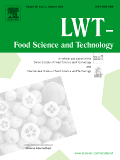
LWT-FOOD SCIENCE AND TECHNOLOGY
Innovating solutions for contemporary food challenges.LWT - Food Science and Technology is a premier academic journal published by Elsevier, specializing in the multifaceted fields of food science and technology. With a distinguished presence since its inception in 1973, this journal has evolved to become a vital resource for researchers and professionals aiming to advance knowledge in food safety, preservation, processing, and sensory analysis. Currently ranked in the Q1 quartile of food science journals, it holds an impressive Scopus ranking of 22 out of 389 in the Agricultural and Biological Sciences category, placing it in the 94th percentile. While certain articles may be available via subscription, LWT is committed to disseminating cutting-edge research that enhances food quality and innovation. This journal not only serves as a critical platform for the exchange of scientific ideas but also addresses contemporary challenges in food technology, ensuring that it remains essential for scholars, industry professionals, and students alike seeking to contribute to and stay abreast of advancements in the field.

OENO One
Cultivating Excellence in Wine Research.OENO One, published by the International Viticulture and Enology Society (IVES), stands as a leading open-access journal dedicated to advancing the science of viticulture and enology since its inception in 2015. Operating out of France, this innovative journal is pivotal in disseminating high-quality research that impacts the fields of Food Science and Horticulture, evidenced by its notable category quartiles—Q2 in Food Science and Q1 in Horticulture as of 2023. With Scopus rankings placing it in the 82nd percentile in Horticulture and the 62nd percentile in Food Science, OENO One delivers timely insights and robust findings to its readers, fostering collaboration and knowledge exchange among researchers, professionals, and students alike. The journal embraces a forward-thinking approach, featuring research from various aspects of wine production, quality assessment, and viticultural practices, making it an essential resource for anyone involved in these disciplines.

Food Science of Animal Resources
Bridging Research and Practice in Food Science of Animal ResourcesFood Science of Animal Resources is a prestigious, peer-reviewed journal published by the Korean Society of Food Science and Animal Resources, serving as a vital platform for disseminating advanced research in the fields of Animal Science and Food Science. Since its inception in 2018, the journal has quickly established itself with an impressive Q1 ranking in both categories for 2023, indicating its relevance and influence in the academic community—evident by its ranking of #23 in Animal Science and Zoology and #78 in Food Science among thousands of journals. Operating on an Open Access model since 2019, it enables unrestricted access to cutting-edge research for a global audience, facilitating collaboration and innovation. Its commitment to quality and rigor makes it an essential resource for researchers, professionals, and students dedicated to advancing knowledge in food safety, nutrition, and sustainable practices within the animal resource sector. Set against the vibrant backdrop of South Korea, the journal aims to bridge gaps in knowledge and foster communication among scholars and practitioners worldwide.

Acta Scientiarum Polonorum-Technologia Alimentaria
Unveiling Cutting-Edge Discoveries in Food ScienceActa Scientiarum Polonorum-Technologia Alimentaria, published by Poznan University of Life Sciences, is a revered journal in the field of food science, showcasing cutting-edge research and innovations in food technology. Established as a leading platform within its domain, this journal is indexed under Scopus and ranks in the 2023 Q3 quartile for Food Science, demonstrating its commitment to high-quality scholarship. With an ISSN of 1644-0730 and E-ISSN 1898-9594, it serves as a critical resource for researchers, professionals, and students seeking to stay at the forefront of advancements in food safety, quality control, and sustainable practices. The journal has also been recognized for its contributions to the agricultural and biological sciences, positioning itself at rank #205 out of 389 in this competitive field. While currently not offering open access, the journal's valuable insights and findings, especially as it publishes through 2024, play a crucial role in advancing knowledge and fostering collaboration among experts in the food science sector.

Ukrainian Food Journal
Unveiling breakthroughs in food technology and safety.Ukrainian Food Journal is an esteemed open-access journal dedicated to advancing the field of food science and biochemistry. Established in 2012 and published by the National University of Food Technologies in Ukraine, the journal serves as a vital platform for researchers and professionals to disseminate their findings on food technology, safety, and nutritional biochemistry. With an ISSN of 2304-974X and E-ISSN 2313-5891, it offers a wealth of knowledge to its readers, promoting innovation and collaboration within the industry. While currently categorized within the Q4 quartile of biochemistry and the Q3 quartile of food science, the journal is progressively gaining recognition, reflecting a commitment to quality research in a competitive field. The journal is indexed in Scopus, ranking #271 in Food Science and #376 in Biochemistry, underscoring its relevance and contribution to agricultural and biological sciences. The Ukrainian Food Journal not only enriches the academic community with its open-access model but also aims to foster dialogue among researchers, professionals, and students dedicated to improving food systems and nutrition. It operates from its headquarters in Kyiv, offering a hub for creativity and advancement in food-related research.
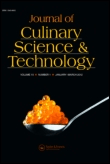
Journal of Culinary Science & Technology
Unveiling the science behind culinary excellence.Journal of Culinary Science & Technology, published by Taylor & Francis Inc, is a prominent peer-reviewed journal dedicated to the interdisciplinary exploration of culinary science, bridging the gap between food production, technology, and gastronomy. Since its inception in 2006, this journal has become increasingly relevant in the field of Food Science, currently ranked Q3 evidenced by its Scopus classification within the agricultural and biological sciences category, which reflects its commitment to advancing knowledge and innovation. With a focus on research that encompasses everything from food safety to culinary trends and nutrition, the Journal of Culinary Science & Technology serves as an invaluable resource for researchers, industry professionals, and students alike, facilitating the sharing of key insights and practices crucial for the evolving culinary landscape. Although not an open-access journal, substantial contributions are made to the academic community through its noteworthy publications, fostering a deeper understanding of culinary methodologies and technologies.
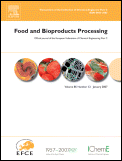
FOOD AND BIOPRODUCTS PROCESSING
Exploring breakthroughs in food and bioproduct processing.FOOD AND BIOPRODUCTS PROCESSING, published by Elsevier, is a leading journal dedicated to advancing the fields of biochemistry, biotechnology, chemical engineering, and food science. With a strong impact factor and robust rankings—Q2 in Biochemistry and Biotechnology, and Q1 in Food Science—it serves as an essential resource for researchers, industry professionals, and students alike. The journal focuses on innovative research and practical applications in the processing of food and bioproducts, spanning from raw material transformation to product development. By fostering the exchange of knowledge and ideas, FOOD AND BIOPRODUCTS PROCESSING aims to enhance food quality and sustainability while addressing global challenges in food security and environmental impact. With an accessible format and a diverse pool of contributors, this publication stands as a vital platform for groundbreaking studies, making significant contributions to the advancement of technology and practices in food processing and production.
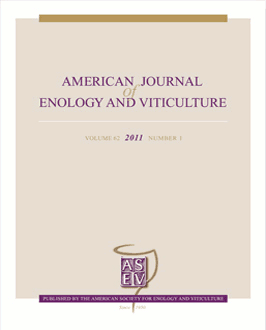
AMERICAN JOURNAL OF ENOLOGY AND VITICULTURE
Advancing the Science of Wine and Vine.The American Journal of Enology and Viticulture, published by the American Society of Enology and Viticulture, serves as a pivotal platform for scholarly research in the disciplines of enology and viticulture. With a distinguished ISSN of 0002-9254 and an E-ISSN of 1943-7749, this esteemed journal has been contributing significant insights since its inception in 1973. Currently residing in the prestigious Q2 category for both Food Science and Horticulture, it ranks impressively among its peers, standing at #27 out of 115 in the Horticulture sector and #165 out of 389 in Food Science, reflecting its impact and relevance in agricultural research. The journal offers a wealth of valuable research articles, reviews, and studies that explore the intricacies of grape cultivation and wine production, making it an indispensable resource for researchers, professionals, and students keen on advancing their knowledge in these fields. Although it does not currently operate under an open-access model, the rigorous peer-review process ensures that only high-quality, scientifically sound content is disseminated, promoting innovation and collaboration in the pursuit of excellence in viticulture and enology.